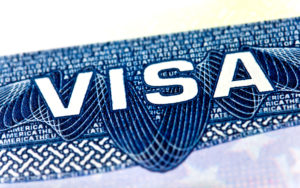For many investors considering a U.S. investment-based visa, the EB-5 option seems increasingly less attractive. Fortunately, there is the E-2 Treaty Trader Visa, which can be an attractive option for investors who wish to obtain lawful status in the United States for themselves and their immediate family more quickly and at a lower cost than an EB-5 visa.
Investment-Based Visas (E-2 and EB-5)
Investor visas, often referred to as “Golden Visas” have been a part of the global mobility marketplace for decades. Several Caribbean countries like St. Kitts and Nevis codified investor visa programs as early as 1984, and the U.S. established its EB-5 investment visa program in 1990. These programs provide a significant source of Foreign Direct Investment to offering countries’ economies and they offer valuable passports to investors — particularly those residing in countries with undesirable political or economic issues.
But becoming a permanent resident or a citizen of another country by obtaining an investor visa can come with drawbacks, not least of which can be becoming subject to more than one nation’s income tax laws. In the United States, once a foreign national becomes a permanent resident, their worldwide income becomes taxable by the IRS as a U.S. taxpayer. EB-5 requirements can be problematic due to its comparatively high minimum investment amount, recently increased to $800,000 for certain investments and $1,050,000 for others. Each EB-5 investment must also create ten full-time jobs for U.S. citizens.
In addition to the eligibility criteria, the current United States Citizenship and Immigration Services (USCIS) processing times for EB-5 petitions is a little over four years. An investor must then complete a 24-month conditional residence period in the United States, followed by filing another petition to remove those conditions that is currently taking nearly five years to adjudicate. Even in a best case scenario (no country-based visa quota backlogs), the timeframe for receiving permanent residence through the United States EB-5 program is currently a shocking 10.5 years — and all this after investing a minimum of $800,000.
The E-2 Visa Alternative
Like EB-5 visas, the E-2 visa is an investment-based visa through which an approved investment in a United States business forms the basis of the visa status. However, unlike with an EB-5 visa, an E-2 visa does not grant the investor or their immediate relatives permanent residence. Rather, approved investors and their immediate family members (for children under 21 years old) enjoy what is known as an “evergreen” non-resident visa, which allows them to live, work, and go to school in the United States on a renewable basis as long as the investor’s business remains operational.
The E-2 visa is a creature of treaty and is an obligation of the United States to citizens of countries with which it has treaties of Friendship, Navigation and Commerce, bilateral investment treaty, or their equivalent. The U.S. has such treaties with 80 nations that qualify their citizens for E-2 eligibility. The basics of E-2 investment eligibility are the following:
- Be a national of a qualifying country;
- Have invested or be actively in the process of investing a substantial amount of capital in a bona fide enterprise; and
- Seek to enter the United States solely to develop and direct the investment enterprise, which is evidenced by at least 50% ownership in the enterprise or possession of operational control of the same.
There is no statutorily defined minimum investment amount for purposes of E-2 eligibility. The requirement is simply that the investment amount be “substantial”. This can be generally understood as an investment commensurate with a qualifying ownership interest of an enterprise or an amount that will effectively capitalize it. The analysis of the sufficiency of the investment depends on the nature and scope of the business but it is typically much less than many golden visa programs including EB-5. For example, if an investor were to open and operate a bodega in New York City, an eligible substantial investment would be much lower than if the investor were opening a manufacturing facility there. There is also no job creation requirement for U.S. citizens as there is with an EB-5 visa.
Another favorable aspect of E-2 visas is that the petitions are not adjudicated by the United States Citizenship and Immigration Service (the USCIS), unless the investor files the petition from within the United States, which is absolutely not necessary to do. In recent years, the fact that E-2 visas are not decided by the USCIS has become more important because in addition to the USCIS’s extensive processing times, the USCIS has become hostile towards immigration petitions. E-2 visas are decided by the United States Department of State abroad. Because the basis of the visa is both non-immigrant in nature and a U.S. treaty obligation, E-2 petitions often enjoy processing times measured in months not years, as well as a far less hostile adjudicatory environment.
E-2 Essential Employees
Another major plus for an E-2 visa is that it allows the investor to bring citizens of their country to the U.S. to work for their U.S. business as essential employees. The eligibility requirements for being approved as an essential employee under an E-2 visa can be complex, but a qualifying essential employee and their immediate family are granted the same status in the US as the investor.
Consider the E-2 Visa
The E-2 visa can be an attractive option for investors who wish to obtain lawful status in the United States for themselves and their immediate family at a lower cost and faster speed than an EB-5 visa.


























